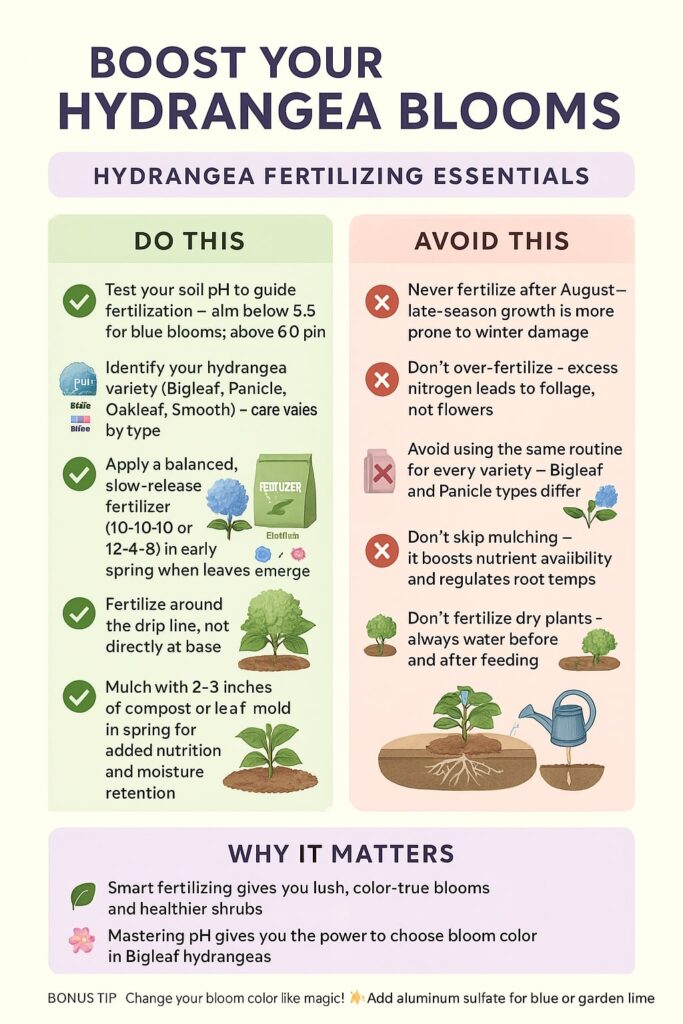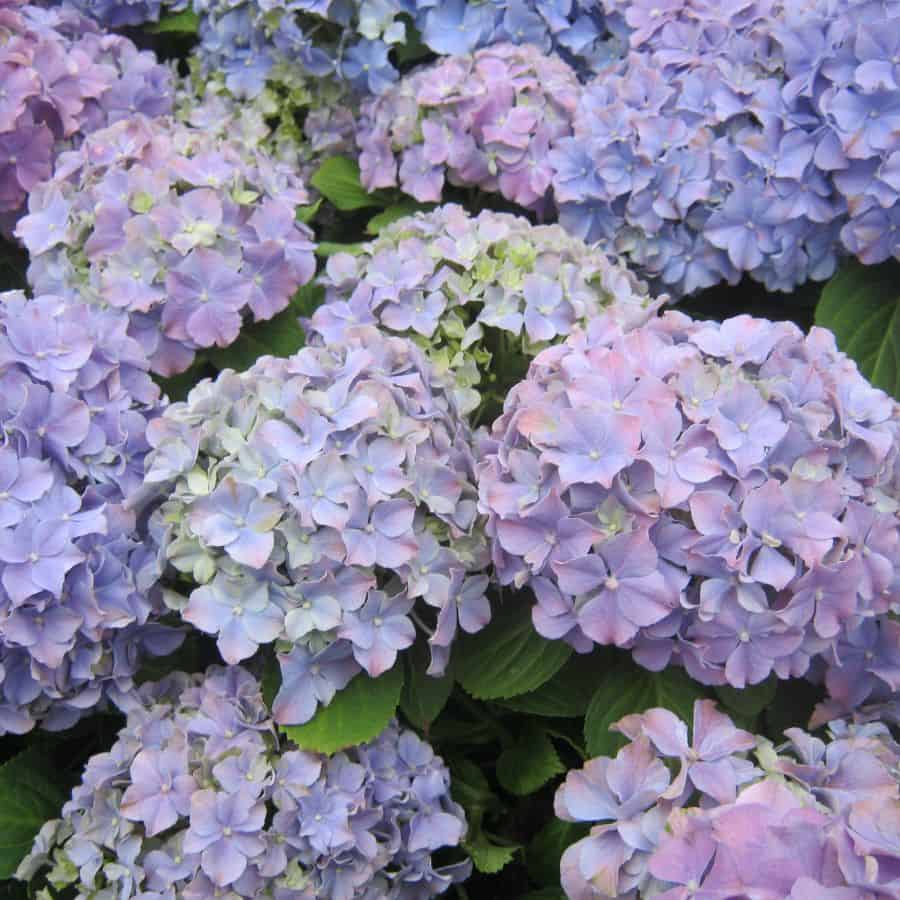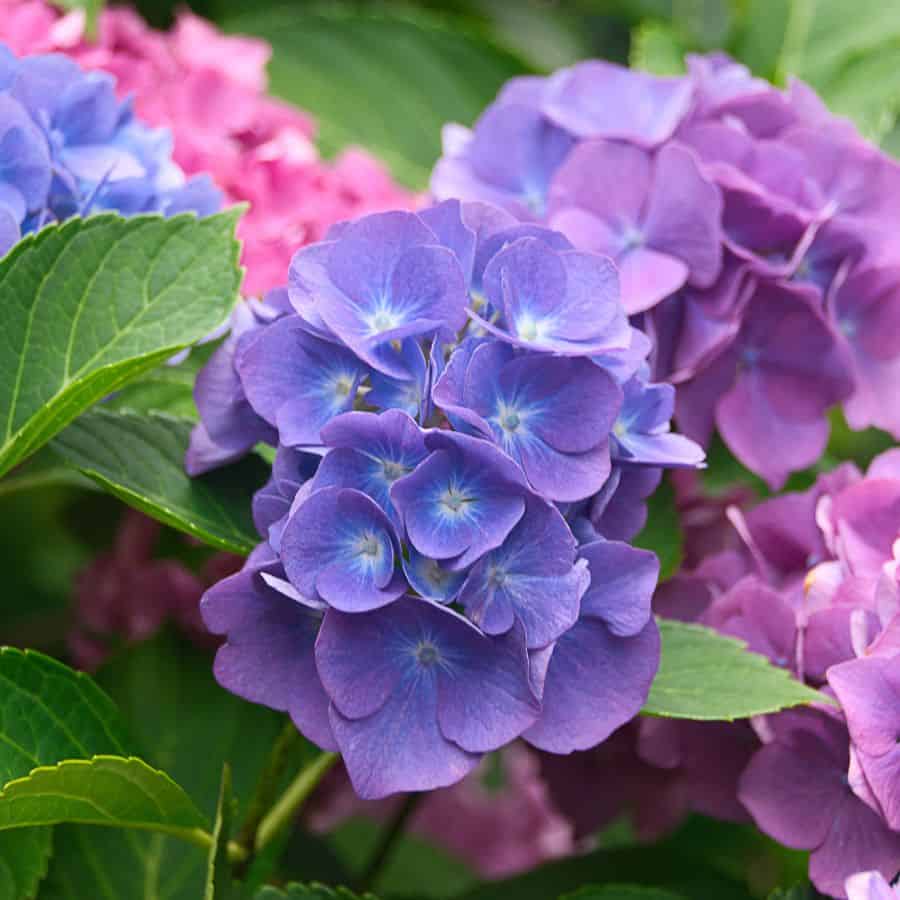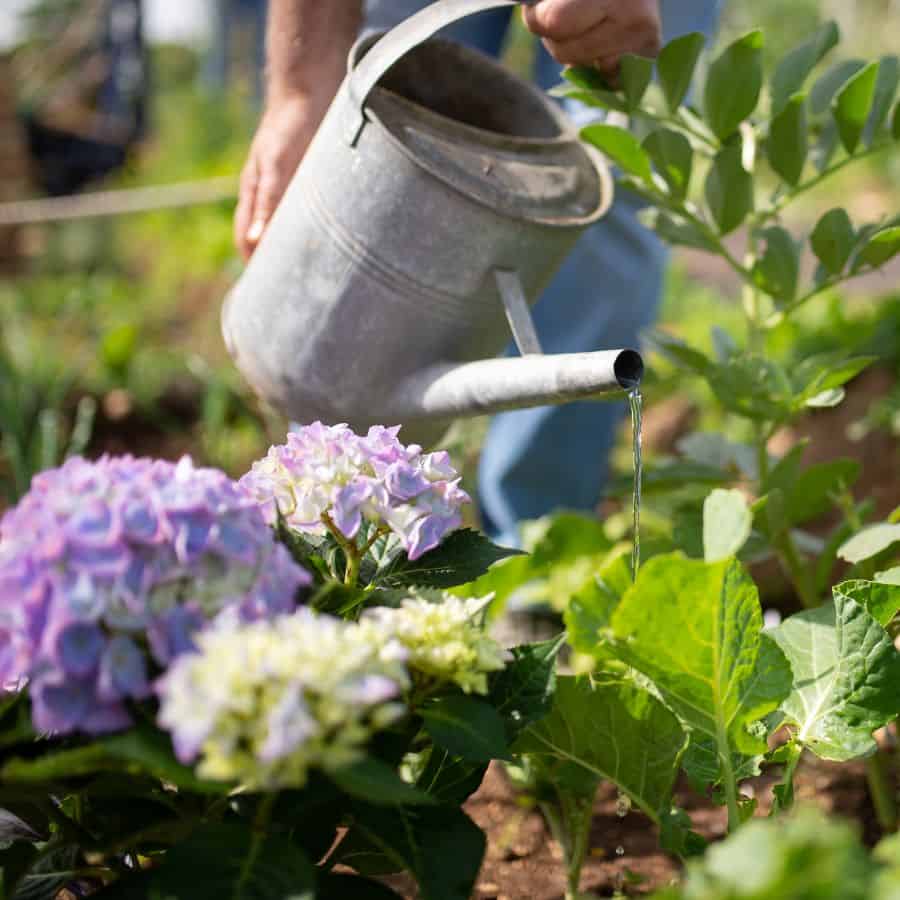
Are your hydrangeas failing to deliver those jaw-dropping blooms you see in gardening magazines? You’re not alone.
The secret most plant experts won’t tell you is that 80% of lackluster hydrangea performance comes down to one thing: improper fertilization.
I’m about to reveal the game-changing techniques that will transform your ordinary shrubs into the neighborhood showstoppers you’ve been dreaming of.
Know Your Hydrangea (Because They’re Not All Created Equal!)
Forget what you’ve heard about generic hydrangea care. These stunning bloomers are like family members, each with its own unique personality and needs. Bigleaf, Panicle, Smooth, or Oakleaf – each variety has its own fertilization demands.

Bigleaf hydrangeas (the color-changing divas of the garden) require different treatment than the more laid-back Panicle varieties.
Understanding which type you have is like knowing whether you’re feeding a toddler or a teenager, crucial for success!
(Quick side note: Not sure which type you have? Take a photo and post it in the comments – our garden community loves helping out!)
The pH Power Play That Changes Everything
The most dramatic secret to hydrangea success lies in your soil’s pH level. This invisible factor is literally the difference between vibrant blue blooms and stunning pink ones, especially for Bigleaf varieties.
- For blue flowers: Aim for pH 5.5 or lower (more acidic)
- For pink flowers: Target pH 6.0 or higher (more alkaline)
Most people make this mistake with their hydrangeas: they fertilize without knowing their soil’s starting point. Grab a soil test kit (under $15 at most garden centers) before you do anything else. It’s like checking your map before starting a road trip!
Timing Is Everything: The Fertilizing Calendar
Your hydrangeas are trying to tell you something important. They need nutrients at specific times, not whenever you remember to feed them!
The difference between amateur and pro plant parents is simply understanding this critical timing.
The prime moment to fertilize is early spring when leaves first appear. This gives your plant the nutrition boost exactly when it’s gearing up for spectacular bloom production. A second light feeding in early summer can further enhance flowering.
Never fertilize after August! This late-season feeding is like giving a child candy before bed. It stimulates new growth that won’t have time to toughen up before winter, leading to damage that can affect next year’s blooms.
Choosing Your Weapon: Fertilizer That Actually Works
Standing in the garden center fertilizer aisle, feeling overwhelmed? I was shocked to discover that many popular hydrangea fertilizers are actually working against your blooms!

Look for balanced, slow-release formulas with an N-P-K ratio of 10-10-10 or 12-4-8. These provide steady nutrition without the feast-or-famine effect that can stress your plants. Think of it as choosing a nutritious slow-cooker meal over fast food for your plants.
For those magical blue blooms, add aluminum sulfate to acidify the soil. For maintaining pink flowers, try superphosphate. Just remember. These amendments are like spices: use them thoughtfully, not recklessly!
Application Secrets: How the Pros Do It
The game-changer for your hydrangeas isn’t what you think. It’s not just what you apply, but how you apply it. Even the perfect fertilizer can damage plants when used incorrectly.
- Create a feeding zone by sprinkling fertilizer in a circle around the plant’s drip line (not against the stems!)
- Water thoroughly after application to help nutrients penetrate to the root zone
- Follow package directions exactly – more is NOT better with fertilizer
Think of fertilizing like seasoning a gourmet meal – you can always add more, but you can’t take it away once it’s overdone!
Organic Matter: Nature’s Miracle Growth Solution
While commercial fertilizers work wonders, the true secret to hydrangea magnificence lies in the use of organic matter.
Adding compost, aged manure, or leaf mold creates soil that not only feeds your plants but also nurtures them. It revives their entire growing environment.
Apply a 2-3 inch layer of organic mulch around your hydrangeas each spring. As it breaks down, it delivers a steady supply of nutrients while improving soil structure. It’s like giving your plants both vitamins AND a better home to live in!
(Between us gardeners, my hydrangeas practically doubled in size the year after I started using my homemade compost as mulch!)
The Watering Connection You Can’t Ignore
Here’s a revelation that transformed my garden: Even perfect fertilization fails without proper watering. Hydrangeas need consistent moisture to utilize nutrients effectively.
Provide about 1 inch of water weekly during the growing season, delivered deeply rather than frequently. Think of it as hydration vs. splashing. Deep watering creates strong roots that can access nutrients throughout the soil profile.

Stressed from drought, your hydrangea can’t absorb nutrients, no matter how much fertilizer you apply. It’s like trying to take vitamins when you’re severely dehydrated – they simply can’t be utilized!
Avoid These Bloom-Killing Mistakes
The fastest way to struggling hydrangeas is through these common fertilizing blunders:
- Over-fertilizing: Creates lush leaves but fewer blooms (like getting all dressed up with nowhere to go!)
- Ignoring soil signs: Yellow leaves often signal nitrogen deficiency, while crispy edges suggest fertilizer burn
- Fertilizing too late: August-onward feeding encourages vulnerable new growth
- One-size-fits-all approach: Not adjusting for your specific variety and soil conditions
Remember: your hydrangeas will flourish with thoughtful care tailored to their specific needs, not generic treatment!
Your Season-by-Season Action Plan
Ready to rescue your hydrangeas and watch them transform into the envy of your neighborhood? Follow this simple seasonal approach:
- Early Spring: Test soil pH, apply main fertilizer dose, add compost
- Early Summer: Light secondary feeding if needed, maintain consistent watering
- Late Summer/Fall: Stop fertilizing, continue watering during dry spells
- Winter: Apply mulch for protection, plan next year’s approach
This cycle works because it mirrors your hydrangea’s natural growth rhythm, providing support exactly when your plant needs it most. The results? Spectacular blooms that make your garden the talk of the neighborhood!